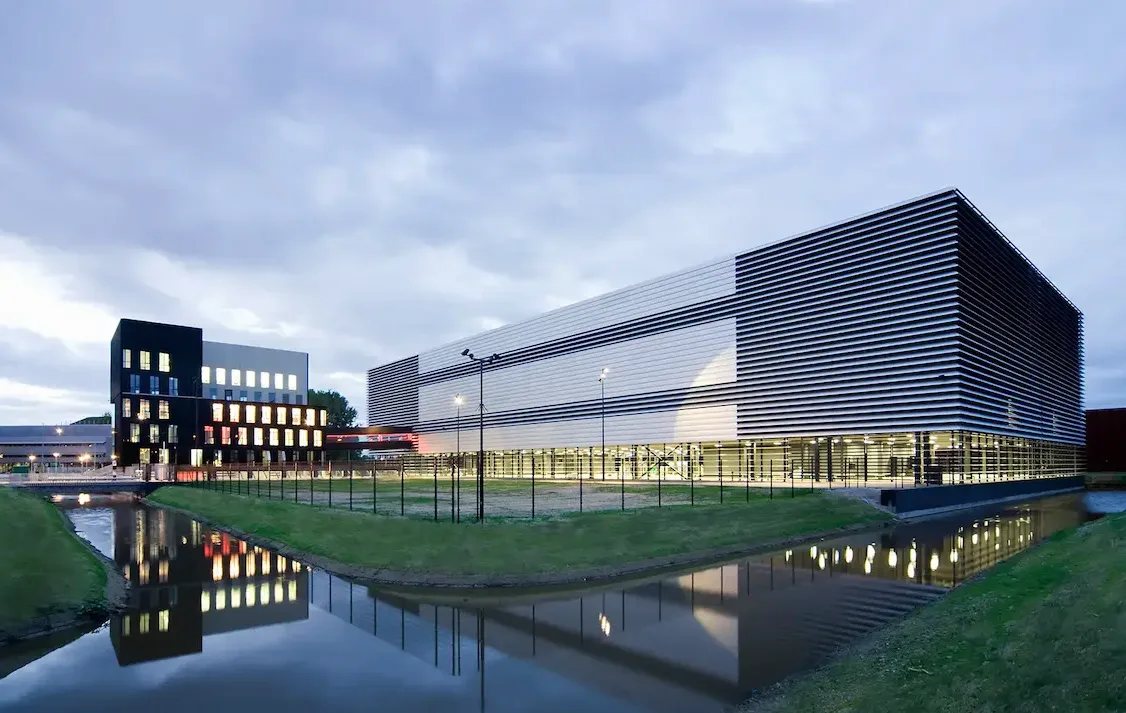LumaDock Expands Its European VPS Network With New Amsterdam Zone
LumaDock has opened a new Amsterdam VPS zone, marking a significant expansion of its European infrastructure footprint. The move places the company inside one of the continent’s most strategically connected data center districts and it signals the continued rise of independent European VPS provider networks focused on data sovereignty, transparency and direct hardware ownership.
Market Context and European Cloud Trends
The VPS hosting market has grown rapidly in recent years, valued at about $5.1 billion in 2024 and projected to exceed $14 billion by 2033, according to Intel Market Research. More than 25 percent of all web hosting services now run on virtual private server infrastructure. The acceleration is driven by developers, startups and small businesses looking for flexibility without the cost or complexity of hyperscaler cloud environments. Independent providers across Europe are capturing new demand from users who value GDPR compliance, predictable pricing and direct technical support.
While hyperscalers like AWS, Google Cloud and Azure control most of the global cloud market, European operators such as OVHcloud, Hetzner and Scaleway have strengthened their regional presence. LumaDock’s expansion adds to this shift, representing the momentum of mid-sized cloud hosts that operate between local boutique providers and global enterprises.
The Amsterdam Launch and Why It Matters
The Amsterdam expansion is not only a geographic milestone but also a logistical achievement. The company has secured space in the Tier III-certified data center complex on Gyroscoopweg in the city’s Westpoort district. The facility, operated by Digital Realty and Qupra Wholesale, has become one of Europe’s densest network intersections, connecting directly to AMS-IX, the Amsterdam Internet Exchange. The site’s AMS1 and AMS4 buildings together provide over 33 megawatts of power capacity and feature redundant cooling, 2N UPS systems, multiple utility feeds and 24-hour generator coverage.
Positioning inside this complex grants LumaDock direct access to more than 50 Tier 1 carriers and over 200 network service providers. The Gyroscoopweg campus is known for its proximity to submarine cables that link Europe with North America, Asia and Africa, enabling low-latency routes across major European cities: under 10 milliseconds to London, Paris and Frankfurt. This makes it one of the fastest network interconnection points available to any mid-size hosting platform.
Overcoming Market Constraints
Amsterdam’s data center sector has faced strict municipal regulation in recent years. In 2019, the city imposed a moratorium on new data center construction due to energy grid constraints and sustainability concerns. The freeze was partially lifted in 2023, but new projects remain limited until at least 2030. This scarcity has driven colocation costs higher and made access to Tier III space increasingly rare. According to CBRE’s 2025 market outlook, colocation pricing in major European cities has risen more than 10 percent year over year, while Dutch facilities report vacancy rates below 5 percent.
By establishing operations in Amsterdam despite these constraints, LumaDock positions itself among a select group of providers able to offer enterprise-grade hosting capacity in one of Europe’s most competitive regions. The company’s decision to enter this market suggests careful planning and established partnerships within the data center ecosystem.
Technical Foundation and Infrastructure Standards
LumaDock’s Amsterdam VPS nodes run on enterprise-grade Dell hardware powered by AMD EPYC processors and NVMe SSD storage. Each host is connected to redundant uplinks that provide unmetered bandwidth. The platform operates with dual-stack IPv4 and IPv6 networking, free DDoS protection and built-in firewalls managed at the hypervisor level. All instances use KVM virtualization, which allows complete isolation and root access for customers who require customizable environments.
The Amsterdam zone mirrors LumaDock’s standards across its other locations in London, Paris, Frankfurt and Bucharest. Every site is hosted inside Tier III+ compliant facilities with redundant power and cooling, ISO-27001 certification and GDPR alignment. The company owns its servers outright, rather than renting through third-party resellers, which gives it full control over hardware performance and lifecycle management.
Security and Reliability Practices
Physical access to the Amsterdam site is protected by multi-layer security, including biometric authentication, 24/7 on-site personnel and CCTV systems with a 90-day retention policy. Fire detection is managed by VESDA early smoke detection arrays and construction materials meet fire-retardant standards. On the logical side, each VPS includes automated backup options and can integrate with external monitoring tools. The infrastructure also supports disaster recovery replication between European zones for clients running distributed workloads.
Network Performance and Connectivity Advantages
The Gyroscoopweg complex’s proximity to AMS-IX and NL-IX gives LumaDock’s new zone access to one of the largest Internet exchanges in the world, connecting over 875 networks from 70 countries. This translates into measurable latency improvements. Test data from industry monitoring tools show sub-20-millisecond round-trip times to 95 percent of European Internet users. For businesses hosting web applications, trading systems or real-time services, these numbers can make a tangible difference in response speed and reliability.
The Amsterdam zone’s connectivity also complements LumaDock’s presence in other major European markets. The company has been expanding faster during 2024–2025, building zones in Western and Central Europe to minimize single-point dependencies and improve redundancy across its internal network backbone. With this addition, it now operates five availability zones, all within close reach of major Internet exchanges.
Position Among European Hosting Providers
Within Europe’s crowded VPS market, differentiation often comes down to ownership and transparency. LumaDock emphasizes that it owns its servers, employs in-house sysadmins for 24/7 support and offers unmetered bandwidth without hidden limits. That combination targets a segment of users who are dissatisfied with oversold VPS environments and unpredictable billing from larger competitors.
Industry surveys indicate that 57 percent of users cite high costs as their main frustration with cloud providers, while 42 percent regret switching hosts due to poor support. Many also report confusion caused by complex billing models or sudden renewal increases. By offering flat pricing and local European operations, smaller providers can build trust in ways that hyperscalers often overlook. Analysts have noted this as part of the broader “digital sovereignty” trend in Europe, where 70 percent of decision-makers now prefer regionally controlled infrastructure for privacy and compliance reasons.
Comparison With Established Competitors
Major players such as OVHcloud, Hetzner and Scaleway continue to dominate regional infrastructure markets, but their focus on volume and automation leaves room for smaller hosts like LumaDock to attract developers who need flexibility. A growing number of independent projects (including self-hosted automation tools like n8n, Docker environments and specialized trading platforms) rely on providers that give customers direct access to system resources. The Amsterdam launch extends these capabilities to users seeking local latency advantages while keeping data within EU borders.
Environmental and Regulatory Considerations
The Netherlands maintains some of the strictest sustainability regulations for data centers in Europe. Facilities are expected to achieve power usage effectiveness (PUE) of 1.2 or better and participate in district heating programs that reuse waste heat from servers. Operators must also comply with the European Green Deal’s carbon neutrality objectives by 2030. Digital Realty’s Amsterdam facilities, where LumaDock is hosted, already run on 100 percent renewable energy and have received ISO 50001 certification for energy management.
Independent reports from the Dutch Data Center Association and CBRE show that operational efficiency standards have improved markedly in the Amsterdam metro area. Average energy intensity per rack has decreased even as power density increases, proving that the region’s regulatory model can support growth without compromising sustainability. For LumaDock, aligning with these policies reinforces its compliance posture and provides reassurance for clients subject to DORA, NIS2 or other regulatory frameworks across the European Union.
Customer Experience and Support Model
LumaDock’s infrastructure strategy centers on direct control and rapid response. Its support staff includes system administrators located in Europe, available 24 hours a day to assist with server issues, migrations and security incidents. Unlike many low-cost VPS resellers, the company manages hardware, networking and virtualization layers internally. Customers can also test any plan risk-free for 30 days with a full money-back guarantee if not satisfied. That approach has earned early positive feedback from small development agencies and businesses migrating from shared hosting.
The company’s transparency and ownership model align with broader market shifts. Developers increasingly prefer providers where they can verify physical data center standards, rather than abstracting everything behind “cloud” marketing. In that respect, the Amsterdam zone enhances LumaDock’s credibility by situating its operations in a known enterprise campus already trusted by multinational firms for colocation and interconnection.
Why Amsterdam Still Matters for Cloud Infrastructure
Despite its restrictions, Amsterdam remains one of the most important digital crossroads in the world. The city handles more than one-third of all European Internet traffic and ranks among the top five global data center markets alongside Frankfurt, London, Paris and Dublin. The region’s connectivity density and renewable energy availability make it an ideal hub for latency-sensitive applications and regulated workloads. Hosting providers that manage to secure capacity here gain not only technical advantages but also long-term strategic positioning within the European network topology.
According to DataCenterDynamics and the Netherlands Times, Amsterdam’s moratorium has reshaped market dynamics rather than halted growth. Operators with existing facilities have seen demand surge, while new entrants focus on optimizing available resources through modernization instead of new builds. LumaDock’s timing coincides with renewed investor attention to regional cloud diversification, as European businesses seek alternatives to U.S. hyperscalers amid evolving privacy laws and geopolitical pressures.
Industry Outlook
Analysts expect the European sovereign cloud and VPS market combined to exceed €190 billion by 2033, growing at more than 22 percent annually. This growth is reinforced by EU-level regulations that encourage local data processing and security auditing. For providers like LumaDock, this trajectory validates their focus on mid-scale infrastructure, local support and transparent ownership. Whether they can maintain competitive pricing under energy and compliance costs remains a key question, but the company’s expansion pattern shows steady operational scaling across multiple countries within the last three years.
Challenges and Competitive Landscape
Even as the Amsterdam launch strengthens its portfolio, LumaDock faces the same structural pressures as other regional hosts. Energy prices in Europe rose by about 15 percent in 2023, raising operational expenses for data center operators. Compliance with environmental and security standards adds another 10 to 20 percent to costs, depending on jurisdiction. Meanwhile, hyperscalers continue investing billions in European AI and cloud infrastructure—Microsoft and Amazon alone announced over €160 billion in new European data center investments by 2030. Competing in that environment requires efficiency, trust and customer intimacy rather than scale.
Industry research by Liquid Web and CloudLinux highlights that small and medium-sized providers can outperform large corporations in user satisfaction when focusing on communication and predictable billing. That finding echoes discussions on professional hosting forums, where developers often praise smaller hosts for faster ticket resolution and better transparency around resource allocation.
What Customers Can Expect
For new users deploying in Amsterdam, the setup experience remains identical to LumaDock’s other regions. VPS instances can be created within minutes through the control panel, which offers templates for Linux distributions and optional Windows environments on Performance plans. Customers can manage backups, DNS and security rules directly from the dashboard. The platform supports integrations with third-party automation tools such as Ansible, Docker and n8n for advanced workflows.
The infrastructure is designed to scale with minimal latency variance, thanks to the high-capacity interconnect between Amsterdam and Frankfurt. Developers and organizations targeting Western Europe now have an additional zone for load balancing or geographic redundancy. The company expects many of its existing clients to extend applications to Amsterdam for proximity to AMS-IX and the Netherlands’ major financial exchanges.
A Strategic Step in a Tight Market
LumaDock’s Amsterdam launch represents a strategic entry into a limited market where availability is scarce and connectivity is unmatched. The move consolidates its status among regional VPS providers that focus on European compliance, transparency and hardware ownership rather than abstract cloud branding.
Operating from a Tier III facility with renewable energy, direct AMS-IX access and sub-20-millisecond connectivity to most of Europe, the Amsterdam zone strengthens LumaDock’s offer to developers, small businesses and agencies that require predictable, high-performance infrastructure. It also reinforces a broader trend across Europe: that independent providers can continue to thrive by owning their hardware, prioritizing customer support and focusing on regional trust over global scale.







